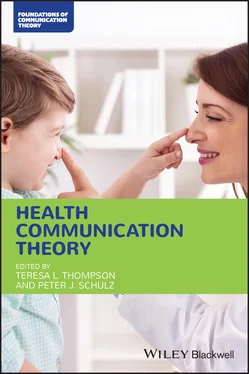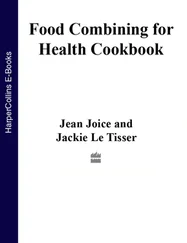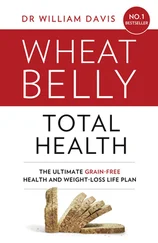The communication discipline boasts a rich history of narrative theory (see Bochner 2014; Fisher, 1987), and communication scholars have contributed meaningfully to the narrative turn in health contexts (see Harter et al. 2020; Harter, Japp, and Beck 2005; Sharf et al. 2011; Sharf and Vanderford 2003). At the heart of his narrative paradigm, rhetorician Walter Fisher (1984) claimed that people are homo narrans – or natural storytellers who think in stories: “Narratives enable us to understand the actions of others ‘because we all live out narratives in our lives and because we understand our own lives in terms of narratives’” (p. 8). These ideas both incorporated and extended literary theorist Kenneth Burke’s (1935/1984) arguments that narratives represent “equipment for living” – or the symbolic resources that allow individuals to size up circumstances and chart future action. According to Sharf et al. (2011), the robustness of narrative theorizing in current health communication scholarship rests in part in its focus on webs of interwoven social (and material) forces. “No story is solely personal, organizational, or public,” they explained. “Personal stories cannot escape the constraints of institutional interests, nor are they separate from cultural values, beliefs, and expectations. Meanwhile, institutional structures and scripts intertwine to form the social milieu in which performances unfold” (p. 38).
Although narrative is a broad term that encompasses a multidisciplinary collection of theories and methods, the maturation of health narrative theorizing speaks to enduring and emerging issues of concern for health communication scholars (Harter et al. 2020). To illustrate, Lynn Harter, one of the premiere narrative theorists in health communication, launched Defining Moments, a forum in Health Communication and a complementary podcast dedicated to showcasing the social and material power of storytelling. In the first 10 years, authors of the collective essays narrated “myriad maladies, infirmities, and oddities of the human condition” and storied a vast number of topics with particular import for fostering well‐being, humanizing healthcare, and advocating for change (Harter et al. 2020, p. 262).
Illness as a Call for Stories
In foundational work based on his own and others’ experiences, sociologist Arthur Frank (1995) positioned illness as a call for stories. His popular typology presents three common plotlines that “wounded storytellers” use to first understand and then to explain their illnesses. The most familiar and socially condoned is the restitution plot, which posits that health problems can be remedied and the body restored to its pre‐illness state. In contrast, the chaos plotline stories illness as incoherent and disordered, with no hope for control and no promise of getting better. Frank (1995) argued wounded storytellers learn to tell the quest narrative – the third plotline, in which illness is deemed a source of insight to be shared with others – when they “meet suffering head on. They accept illness and seek to use it” (p. 115). Scholars have employed this typology as a theoretical framework in research especially focused on life with chronic illness, impairment, or loss (e.g. Titus and de Souza 2011); however, it may not be applicable for all illness situations, including ailments that are chronic but managed, and successful recoveries/remissions that provoke new emotional, cognitive, and physical challenges, like long‐term cancer survivors’ late effects from treatment (e.g. Ellingson 2017).
Illness narratives are generated in response to a rupture or turning point in a person’s life (Bruner 1990) and are told in and through the body (Frank 1995), meaning “the body is simultaneously cause, topic, and instrument of whatever story is told” (Sparkes and Smith 2008, p. 302). Inherently, narratives of health and illness are embodied and dialogic, calling upon listeners (or readers, viewers, touchers) to join with tellers (or writers, filmmakers, artists) in the creation and re‐creation of meaning (Harter et al. 2020). Narrative theorists (Frank, 1995; Kleinman, 1988) underscore the importance of reciprocity for bearing witness to individual or community suffering and trauma. Storytellers have the moral responsibility to guide others who may follow, just as storylisteners have the moral – and often uncomfortable – obligation to listen and respond to that suffering.
Core dimensions of narrative theorizing from health communication scholars encompass the functions (e.g. identity construction and community building), grammars (e.g. emplotment and temporality), and types (e.g. institutional and societal stories) of narrative activity (Harter et al. 2005). Narratives endow experience with meaning by organizing events across space and time, identifying characters and their relationships, and determining causes and effects (Harter 2013). Personal narratives provide a way of sensemaking in uncertain or chaotic circumstances and enable a sense of control in the face of threat or disorder. They help transform personal identities regarding how individuals view themselves and are perceived by others, and they help create identification among people experiencing similar problems, thereby building a sense of community in place of social isolation (Sharf and Vanderford 2003; Sharf et al. 2011). Finally, narratives increase public awareness, challenge master narratives (i.e. stories that underlie, reflect, and perpetuate predominant cultural values), and propel health advocacy and social activism (Sharf 2001; Zoller 2005). Sharf et al. (2011) envision the latter contributing to new directions in health communication scholarship, namely “a parallel continuum of stories of illness to stories of prevention, healing, and mobilizing resources” (p. 42).
In their seminal collection of health and illness narratives, Harter et al. (2005) advanced a typology of what they consider core dimensions – or vital problematics (i.e. assumptions) – of narrative theorizing that are pervasive but often unarticulated in the way scholars do narrative work. First, the problematic of knowing and being foregrounds how individuals narratively co‐construct and understand personal and social life. As one example, Yamasaki and Hovick (2015) revealed how African American older adults characterize their understandings of health‐related conditions from storied family histories and then rationalize their motivations and constraints for sharing that information with current family members. Second, the problematic of continuity and disruption, which “concerns disorder and the human desire for coherence” (Harter et al. 2005, p. 14), describes how storytellers construct and weigh “the past/present/future flow of continuity and disruption to give force to some understanding of the distinction between ‘now’ and ‘then’” (pp. 15–16). To illustrate, Pangborn (2019) poignantly demonstrated how teenagers at a family bereavement camp rely upon aesthetic and embodied narrative experiences to reject confining scripts for “appropriate” grief, acknowledge the value of their perspectives, and reengage in life in affirming ways.
Next, the problematic of creativity and constraint “foregrounds the human struggle to be individuated (i.e. assert creativity) and still identify with a group (i.e. respond to social and institutional constraints),” emphasizing connections between the personal and cultural (Harter et al. 2005, p. 19). Health communication scholars have engaged this problematic in studies that explore how “narratives emerge as contested terrains, open to challenge by those who seek to reshape perceptions of health issues and construct alternate narratives” (Harter et al. 2005, p. 23), including embodied, aesthetic stories that transform meanings of age (e.g. Sharf 2017; Yamasaki 2014), disability (e.g. Harter et al. 2006; Quinlan and Harter 2010), and baby loss (e.g. Willer 2016; Willer et al. 2019), among others. Finally, the problematic of the partial and indeterminate recognizes that the nature of narrative knowledge is always situated and shifting: “People live stories, and in the living of these stories, reaffirm them, modify them, and create new ones” (Harter et al. 2005, p. 27).
Читать дальше












